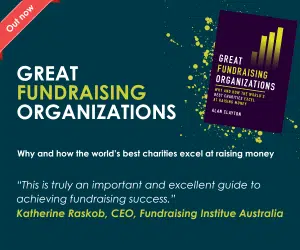Improve or reinvent to overcome donor fatigue?
In the second in a series of columns for UK Fundraising, Leo Rayman of Zalpha, looks at two responses to combating donor fatigure.
In my previous column I suggested that charities concerned with apparent donor fatigue faced two possible courses of action – improvement or reinvention.
Improvement means sticking to the knitting – overhauling your current strategy to ensure that you are maximising the use of media channels, creative execution, processes and products.
Advertisement
Reinvention is perhaps slightly more daunting. It involves going back to the drawing board, overhauling your brand and the way you present your cause, how you connect with donors, and what support means to you.
Before I go into detail about how to approach each broad course of action, you first need to know when it’s time to pursue which course? Common sense might suggest that smaller charities trying to grow should focus on improvement, whilst larger charities should look towards reinvention, but this is not the case. Even the UK’s largest charities have found that something as simple as a change in creative tone can open up a floodgate of donations.
Broadly speaking, whilst you are still seeing growth as you test new messages, channels, processes or products, it’s clear that you haven’t yet reached a point of saturation and there’s still room for improvement. In contrast, when you find that you are putting more money into the same way of doing things and yet your overall efficiencies are falling, it’s time to go back to the drawing boardroom and start the process of reinvention.
An example of reinvention in process is WWF, which started as a charity that aimed to protect endangered species. In recent times it has widened this remit to include environmental issues to bring in new supporters. The new, broader remit represents a smooth transition rather than a messy or complex relaunch as it is clear that without a sustainable environment, no species would survive.
As charities tend to be relatively conservative in response to change, reinvention is certainly daunting. But remember, someone had to run the first regular giving programme, someone had to make the first DRTV appeal, and once upon a time there was no such thing as a charity fun run.
In reality, however, it is never a case where you have to choose one route exclusive to the other. At any one time, charities should be focusing seventy per cent on improvement and thirty per cent on testing new ground.
But let the improvements commence. In the next column I will focus in detail on making the most of media channels.
Leo Rayman is planning partner at marketing communications consultancy Zalpha.



